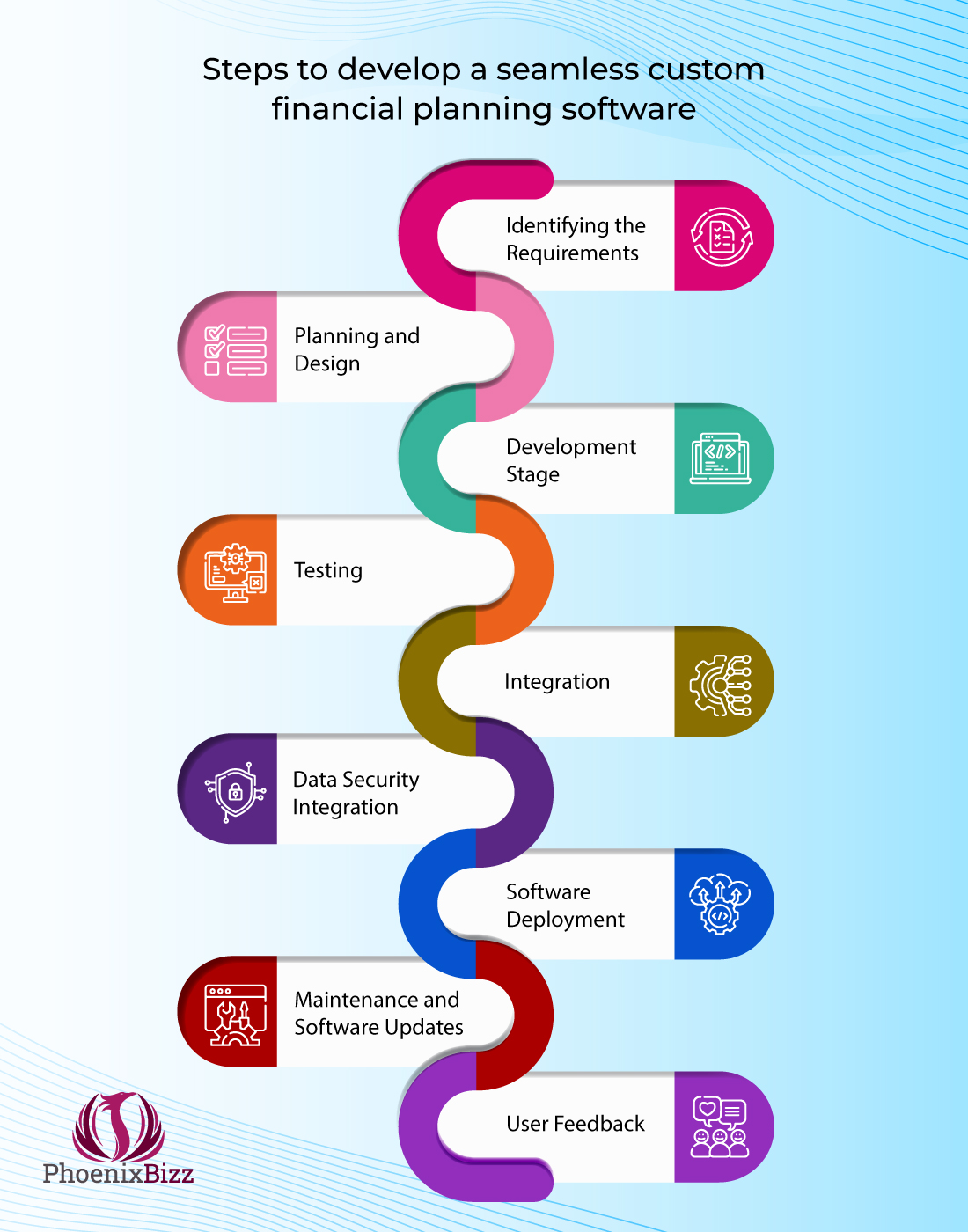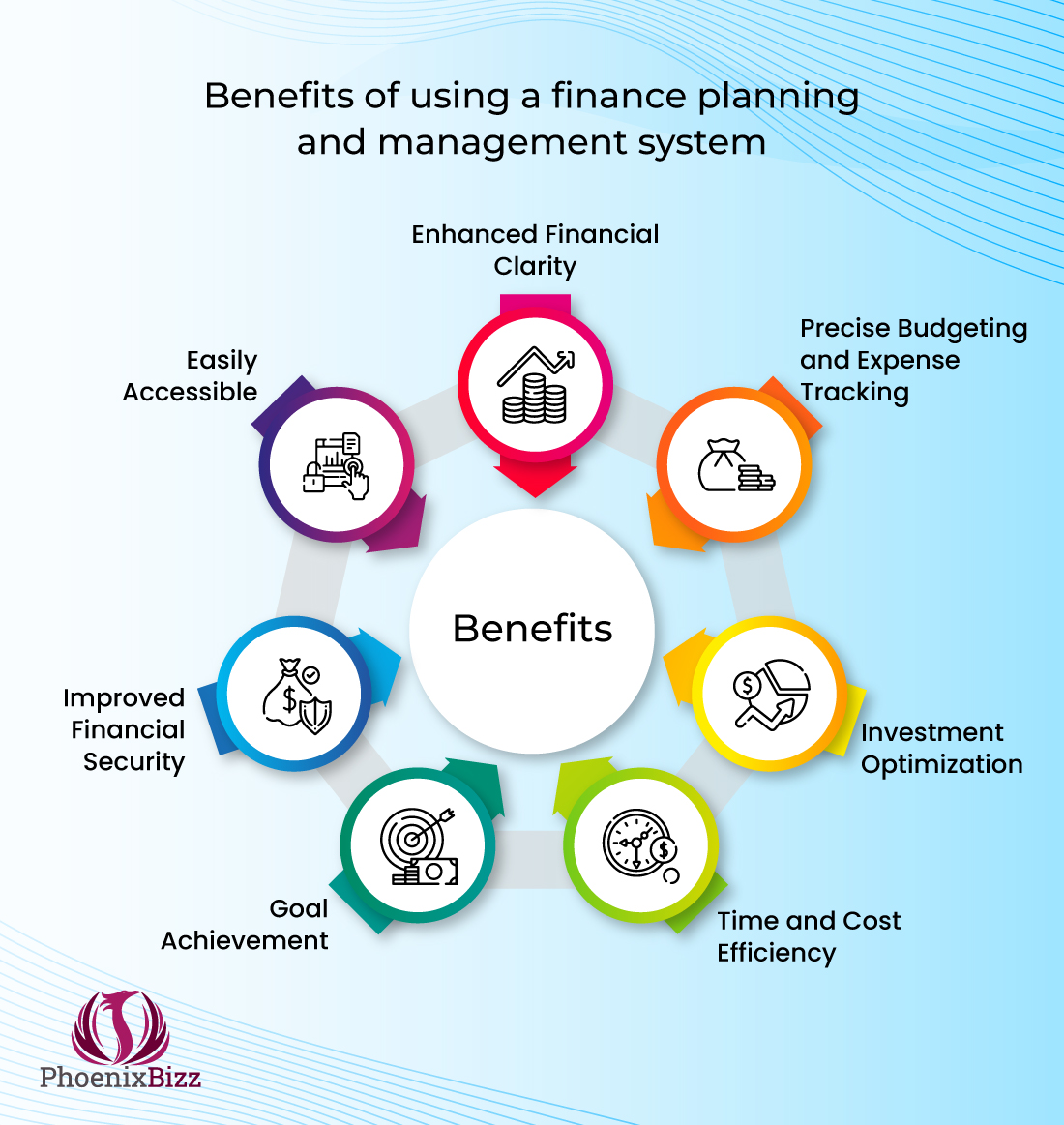October 04, 2023
By: PhoenixBizz Staff Writer
PhoenixBizz is a division of Sofvue, LLC
Printed with permission of Data Titan and Sofvue LLC
Next to sales, it could be argued that financial processes and systems are the next most important of any business enterprise. Finance, AR/AP, capital management and financial management systems are the backbone of a company. A perfectly crafted financial plan is indispensable, guiding your project or company's expenditures and identifying opportunities for cost-saving measures. With a well-thought-out financial strategy in place, managing these business units becomes a streamlined process.
Financial planning software and finance management systems emerge as powerful tools to assist companies in addressing various financial challenges. These solutions not only simplify tasks but also alleviate the workload on finance teams -- through automation.
If you are a CFO or COO looking to harness the power of technology to seamlessly oversee your company's finances, this article will provide you with a comprehensive understanding of the crucial facets of financial planning software, empowering you to make informed decisions for your organization's financial health.
What is financial planning software?
Financial planning software is a sophisticated digital tool designed to facilitate the strategic management of finances. Commonly referred to as a finance management system, these software systems cater to a broad spectrum of businesses, and serve as a comprehensive platform for creating, analyzing, and optimizing financial plans. Some of the deliverables include:
Budgeting and Forecasting
Allows businesses to set financial goals and track performance against those objectives. Budget variance reports are commonly used features.
Cash Flow Management
Monitors income and expenses to ensure that the business maintains liquidity. Helps in planning for periods of cash shortages or surpluses.
Expense Tracking
Helps businesses categorize and track operating costs, from utilities to employee salaries.
Revenue Modeling
Tools to predict revenue based on different business scenarios, market conditions, or changes in strategy.
Profit and Loss Reporting
Generates P&L statements to evaluate business performance over a specific period.
Balance Sheet and Income Statement Generation
Automatically produces these important financial documents, often in real-time.
Scenario Planning
Allows companies to model the financial outcomes of various business scenarios such as mergers, acquisitions, or entering new markets.
Multi-currency and Multi-entity Support
For businesses that operate in multiple locations or deal with multiple currencies, this feature is crucial for accurate financial planning.
Tax Planning and Compliance
Assists in calculating tax liabilities and ensuring that the business complies with local, state, and federal tax laws.
One key feature of financial planning software is its ability to gather and utilize financial data from various sources, including income, expenses, assets, and liabilities. This data is then used to create a clear and detailed map of the business’ financial situation, often presented in the form of interactive dashboards and reports. Moreover, these software solutions typically incorporate powerful forecasting and scenario analysis tools. Users can then model different financial scenarios, such as investing in a project, leasing workspace, or new payroll schemes, letting them assess the potential outcomes and adjust their financial strategies accordingly.
Another critical aspect of financial planning software is its ability to recommend strategies and investments based on the financial goals and risk tolerance of the business. The software can provide insights into asset allocation, tax planning, and investment selection to optimize returns while managing risks effectively.
Financial planning software often integrates with online banking and investment accounts, allowing for real-time tracking and updates of financial transactions and investments. This feature promotes financial transparency and ensures that the financial plan remains aligned with the user's actual financial situation.
How to develop a seamless custom financial planning software?
It is important to understand how custom financial planning software is created. As a project owner, you must hire a software development company who can build your solution, but remember, you only get out of your software what you put into it. Software developers and programmers are developers, but we cannot read minds. Knowing the development process well will help ensure that the software you receive from the service provider is of high quality. Here are some of the steps:

Step1. Identifying the Requirements
The process begins with a thorough understanding of your project’s needs and objectives. This phase involves consultations and discussions to determine the specific features and functionalities required in the financial planning software. It is crucial to define the project's scope and set the goals accordingly for timely project completion.
Step2. Planning and Design
Once the requirements are gathered, the development team creates a detailed project plan. This plan outlines the software's architecture, design, and technical specifications. User interface (UI) and user experience (UX) design are also part of this phase, ensuring that the software is visually appealing and easy to use.
Step3. Development Stage
The actual coding and development of the financial planning software takes place in this stage. Developers write the software code, following industry best practices and standards. They integrate the required features, databases, and third-party APIs according to the project plan.
Step4. Testing
A seamless software is the one that has no bugs and errors. Rigorous and timely testing is essential to identify and rectify any bugs or issues within the software. Quality assurance or QA teams conduct several types of testing, including functional testing, usability testing, and performance testing, to ensure the software functions correctly and efficiently.
Step5. Integration
Financial planning software often needs to integrate with external systems, such as banking APIs, investment platforms, or data sources. Integration is a critical phase where these connections are established and tested to ensure seamless data flow. Some businesses prefer to integrate this software in their already existing systems.
Step6. Data Security Integration
Given the sensitive nature of financial data, security is paramount. Developers implement robust security measures to protect user data and financial information. This includes encryption, authentication, and authorization mechanisms to protect confidential data from security breaches and data thefts.
Step7. Software Deployment
After successful testing and user training, the financial planning software is ready for deployment. It can be hosted on the client's servers or in the cloud, depending on their preferences and requirements. Always ensure to double check the software before and after deployment to reduce any risks.
Step8. Maintenance and Software Updates
The launch of the software is not the end of the process. Regular maintenance and updates are essential to address any issues, improve performance, and add new features as needed to ensure performance upkeep. This ongoing support helps in maintaining software efficiency.
Step9. User Feedback
A good software development company will always collect feedback from the client as well as users, which is crucial for continuous improvement. User input can help identify areas for enhancement and guide future updates and iterations of the software.
Benefits of using a finance planning and management system
Companies prioritize finance planning systems because they offer numerous benefits. Managing and planning finances can be complex, and technology makes it easier. These systems simplify financial tasks, improve accuracy, and help businesses make better decisions with less hassle. As a result, investing in finance planning systems is a wise choice for companies seeking efficiency and effectiveness in their financial operations.

#1. Enhanced Financial Clarity
One of the most significant advantages of using a finance planning and management system is gaining unparalleled clarity about your financial situation. These systems collect and analyze all your financial data in one place, providing you with a comprehensive overview of your income, expenses, investments, and debts. This clarity empowers you to make informed financial decisions, identify areas for improvement, and set realistic goals.
#2. Precise Budgeting and Expense Tracking
Creating a budget and sticking to it can be challenging without the right tools, especially when you own a small business. Finance management systems make budgeting effortless by allowing you to set spending limits for various categories and tracking your expenses automatically. This proactive approach helps you control overspending, save more, and allocate resources to your financial priorities.
#3. Investment Optimization
For those looking to grow their wealth through small business investments, finance planning systems are indispensable. They provide tools for evaluating investment opportunities, assessing risk, and optimizing your investment portfolio. With access to real-time market data and analysis, you can make informed investment decisions that align with your financial goals.
#4. Time and Cost Efficiency
Manual finance management can be time-consuming and error prone. Finance planning and management systems automate many tasks, such as transaction categorization, data entry, and reconciliation. This automation not only saves you time but also reduces the risk of mistakes that could impact your financial stability. It also enables cost saving by reducing the team size and manual reliance.
#5. Goal Achievement
Whether you want to introduce a new product to your business or wish to start a new service, finance planning systems help you set and achieve your financial goals. By tracking your progress and offering insights into your financial habits, these systems keep you motivated and on the right track to realizing your goals.
#6. Improved Financial Security
Data security is paramount in today’s digital world. Finance planning systems are designed to include data privacy and security protocols. Software development companies use antiviruses, anti-malwares, and encryption technologies to safeguard your data.
#7. Easily Accessible
In today's interconnected world, having access to your financial data on the go is essential. Most finance planning systems offer mobile apps or web-based platforms, allowing you to check your finances, make transactions, and monitor investments from anywhere with an internet connection. A business owner should have such information at their fingertips, which is made possible with a financial planning system.
Also Read: Are You Planning To Invest In Custom Software Development? Here’s The Top 5 Reasons To Go First
Frequent questions asked about financial planning software
1. How much do you charge for financial planning software development?
We have a precise pricing structure for different services, but the overall development cost is dependent on the project size, software type, team size, customization, platform used, etc. You can contact our support team to schedule a discovery call.
2. What features can you add to a custom financial planning software?
PhoenixBizz has experts who excel in integrating advanced and basic features such as budget tracking, investment portfolio management, expense categorization, goal setting, real-time financial data integration, secure data encryption, and interactive reporting. The specific features needed for each project are unique but can be tailored to meet your unique application needs.
3. What data security measures do you use in custom financial software development?
Your data security is important and our software safeguards sensitive financial data. Our custom financial planning software employs advanced security measures including encryption techniques to protect data, secure connections to financial institutions, and multi-factor authentication for user access. These features collectively ensure that your financial information remains confidential and secure.
Conclusion
An effective finance management system or custom software can significantly decrease the workload of your finance team while also minimizing errors. If you are seeking a professional financial planning software development partner, contact us at 623-845-2747.
Here is what you can expect from us:
✅ Safe and secure solutions
✅ Maximum ROI investment
✅ Expert staff
✅ Ongoing customer support post-launch
✅ Continuous software updates
With a record of accomplishment of designing and developing solutions valued at over $23 million, PhoenixBizz, a division of Data Titan and Sofvue, LLC, boasts over two decades of client service experience. Our expertise spans various segments, including custom application development, website development, and financial and small business management systems.
RE: 11655









